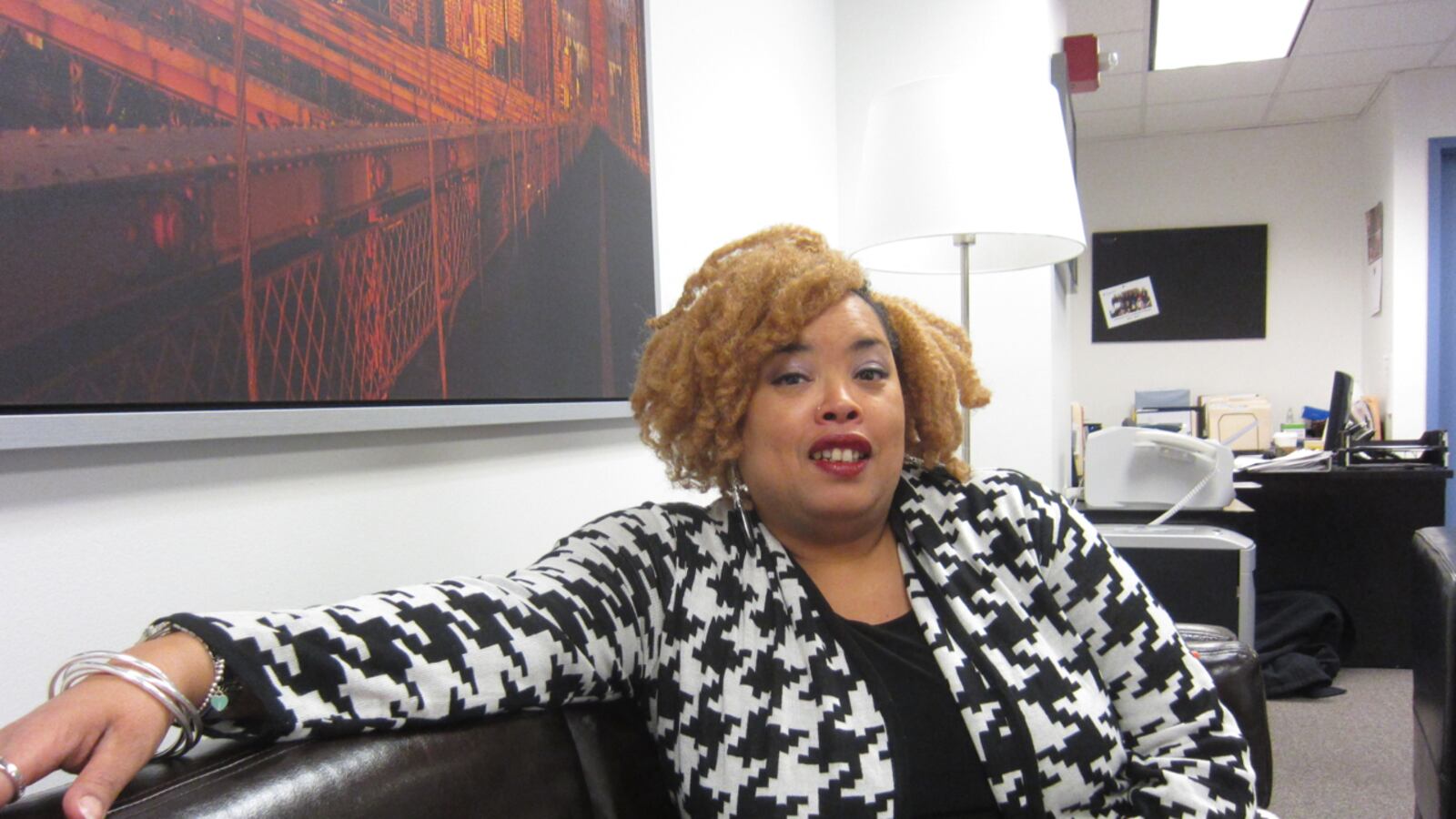This is one part of an occasional series focusing on the individuals who make up the city’s 80,000-member public school teaching force.
Alesia Matthew can’t stand it when people don’t speak clearly.
Maybe it’s her southern roots, or the 11 years she spent working in the legal field, or the fact that, decades before she realized she wanted to teach, all of her summer jobs in high school and college involved working with children.
Whatever the reason, Matthew said, “When I’m going to say what’s in my mind, I go out of my way to make sure what I say is clear.”
Matthew says her background in law taught her to value clarity in all forms of communication, whether she’s giving instructions, writing a legal brief, or making an oral argument. When she started teaching, she was surprised to find that those skills also helped her engage students and sharpen their thinking. She now sees them as central to her ability to jump into teaching as a second career.
Growing up in Lexington, Kentucky, Matthew always had her sights set on law. After earning her law degree from Ohio State University, she moved to Queens to work in the Legal Aid Society’s criminal defense division.
Matthew loved the work, but kept getting antsy. She worked as a contract attorney for major New York law firms, then as a legal recruiter, then in the legal compliance division of an insurance company, but she didn’t feel like she was “making any kind of impact.”
Meanwhile, a school down the road from her apartment in Bedford-Stuyvesant caught her eye. In 2002, she got a job teaching legal studies at M.S. 258, a struggling neighborhood school that the city would close six years later. Rather than teaching a separate elective, Matthew said, she went into social studies classes and worked with all of the students in the school.
Matthew had no training in education, so she used with her high schoolers the only approach she knew: the Socratic method her law school professors had used.
That means “calling on them, asking open-ended questions,” she said. “These aren’t yes/no questions, these are more, ‘Why? OK, prove it. How are you going to support that? OK, let me play devil’s advocate.’ My classes have always been in these discussions.”
She continued to use that approach the next year, when her assistant principal, Adofo Muhammad, asked her to teach English. She later followed Muhammad to M.S. 143 and then, after a brief stint at M.S. 571, to Bedford Academy.
Matthew said that argument was the focus of her English classes even before the Common Core learning standards were formally introduced. Based on her experience in law school, she decided that the best way to help students learn to make arguments and support them was by going through the process over and over again.
This January, after reading Plato’s “Apology,” “Crito,” and “Allegory of the Cave” with her AP Language and Composition class, she asked them to respond to the question, Do societies exercise mind control over their citizens?
By that point in the year, Matthew said, her students were familiar with the process: Develop a claim, use direct textual evidence to prove the claim, and then analyze and discuss how that evidence proves the claim. Then ask, based on that argument, what is a possible counter-claim?
She said that once students got the hang of the process, they started coming up with counterclaims that others might not see. “That’s where the creativity comes in,” she said.
Now, as the school’s lead English teacher, Matthew is focused on coming up with ways to help students to think for themselves. Given her roundabout path into teaching, its a role she’s now comfortable with, she said, recalling a recent run-in with an old student who said she was the teacher who had “made her think the most.”
“That solidified it for me—this is what you’re supposed to do,” Matthew said. “Most students I have had say to me, you made me think. And you were easy to understand.”


